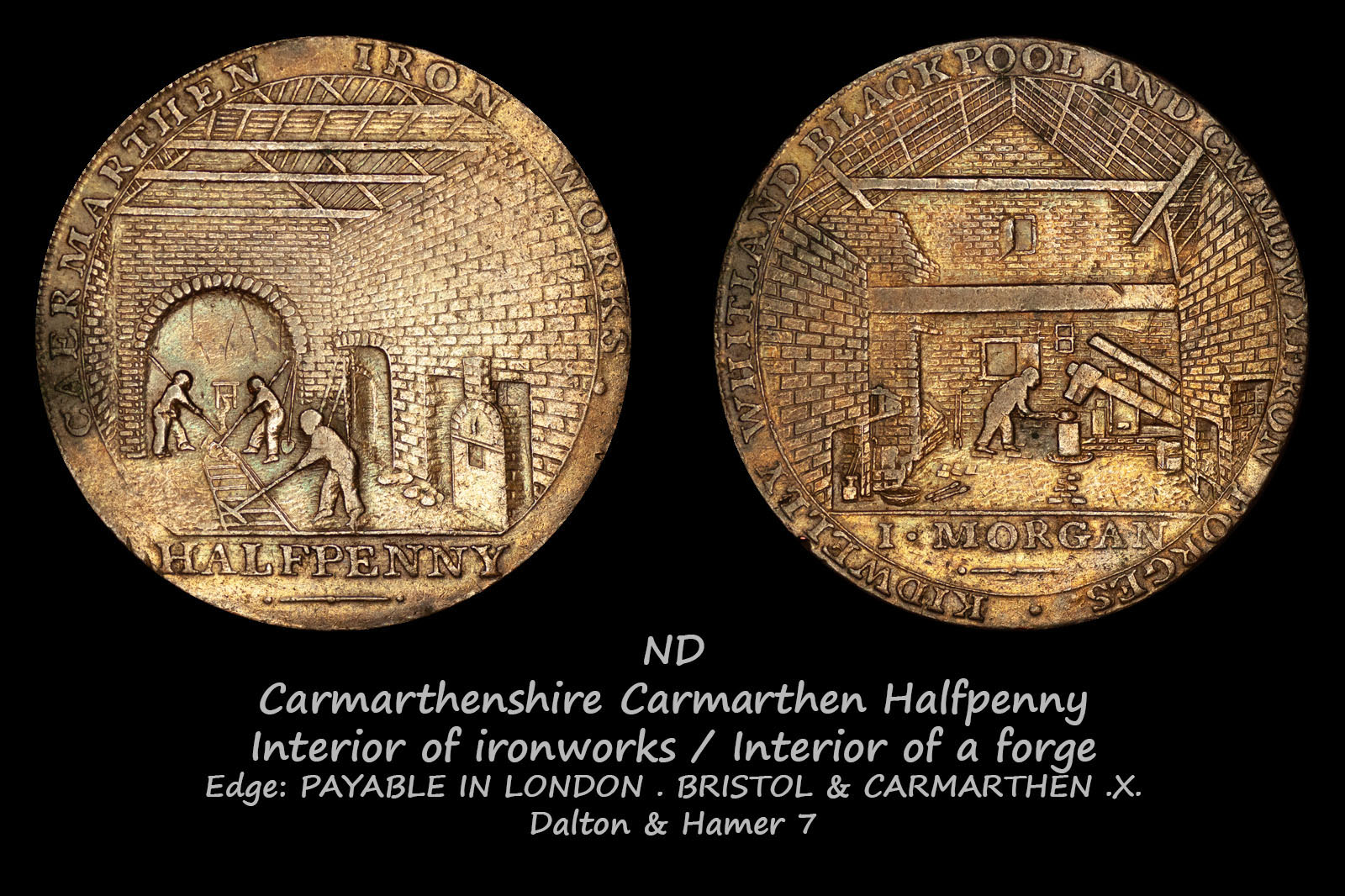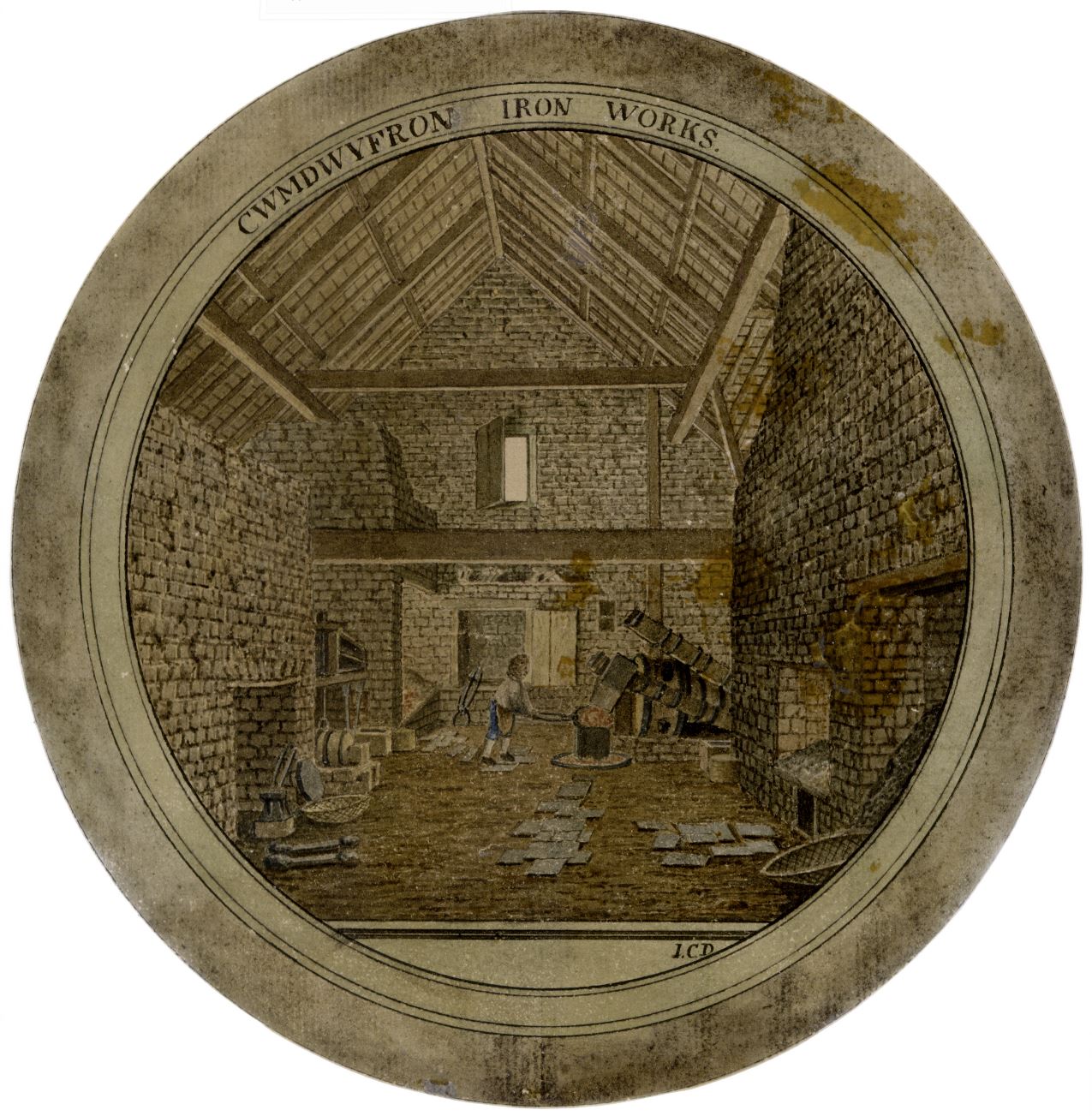
Online collections
monedastodas.com
All collections » Tokens » Carmarthen Halfpenny
The front side of the token depicts three men at work in a brick building and a circular legend: “CAERMARTHEN IRON WORKS”, and the denomination is indicated at the bottom: “HALFPENNY”.
 Interior
of iron works showing a furnace and men at work
Interior
of iron works showing a furnace and men at workThe reverse side depicts a forge room with a blacksmith working behind an anvil, whose hammer is driven by the power of water. The circular legend reads: "KIDWELLY WHITLAND BLACKPOOL AND CWMDWYFRON FORGES" (Kidwelly, Whitland, Blackpool and Cumdwyfran Forges), at the bottom: "I. MORGAN.
 'Cwmdwyfron
Ironworks', watercolor c. 1790
'Cwmdwyfron
Ironworks', watercolor c. 1790Color watercolor images dated 1790 have been preserved, which became the basis for the production of token stamps.
Edge inscription: “PAYABLE IN LONDON. BRISTOL & CARMARTHEN. X." (Payable in London, Bristol and Carmarthen).
The stamp engraver and manufacturer is Hancock (John Gregory Hancock).
Cwmdwyfran Iron Works was founded by
Robert Morgan. In 1750, the plant produced 120 tons of pig iron. Until
1760, the plant produced cannonballs and cannonballs for the Board of Ordnance. In
1761, tin production was launched. Subsequently, the management of
the plant passed to John Morgan Sr., the son of Robert Morgan.
In Carmarthen, his manufactory was
located at the entrance to the city on Llendeilo Road (Llandeilo road). The
small town of Qumduaifran is located nearby. Kidwelly is about ten
miles from Carmarthen. Whitland in Carmanthenshire, eight miles
from the town of Narberth in Pembrokeshire, had a blacksmith's forge powered by
water from the old Whitland Abbey fish reservoir. Three miles from
Narberth is Blackpool, where Morgan had another large iron manufactory.
John Morgan's banking business began in
1792 with the issuance of tokens to promote iron production, circulating in
London, Bristol and Carmarthen, and then grew into a full-fledged Carmarthen
Furnace Bank.
The image on the token is made very skillfully, the perspective and volume of the premises are very well conveyed, many of the smallest details and tools are shown with great accuracy, for example, tongs leaning against the wall.